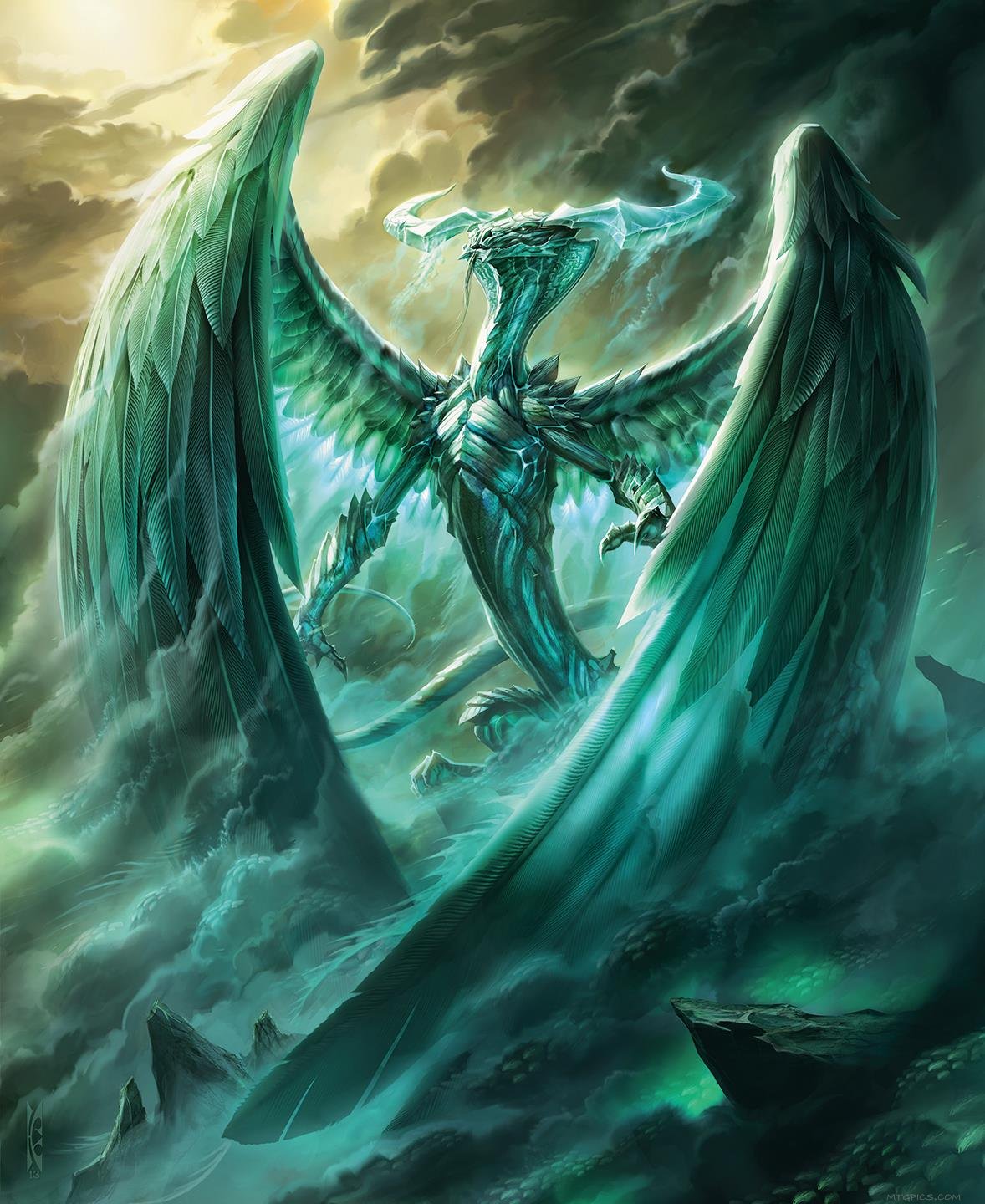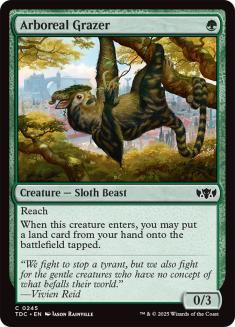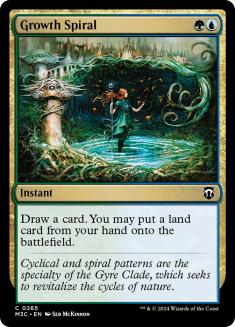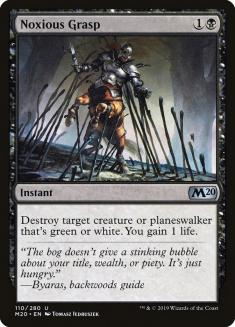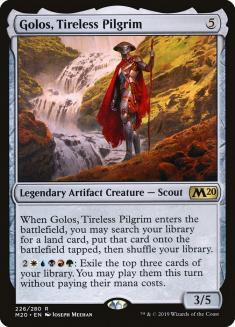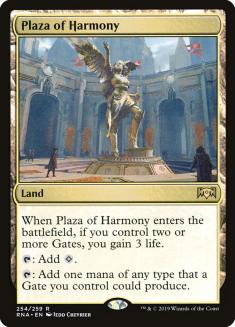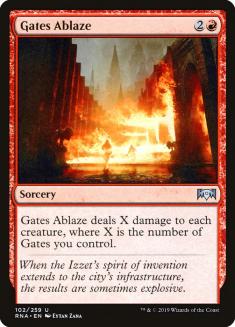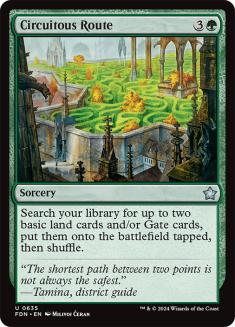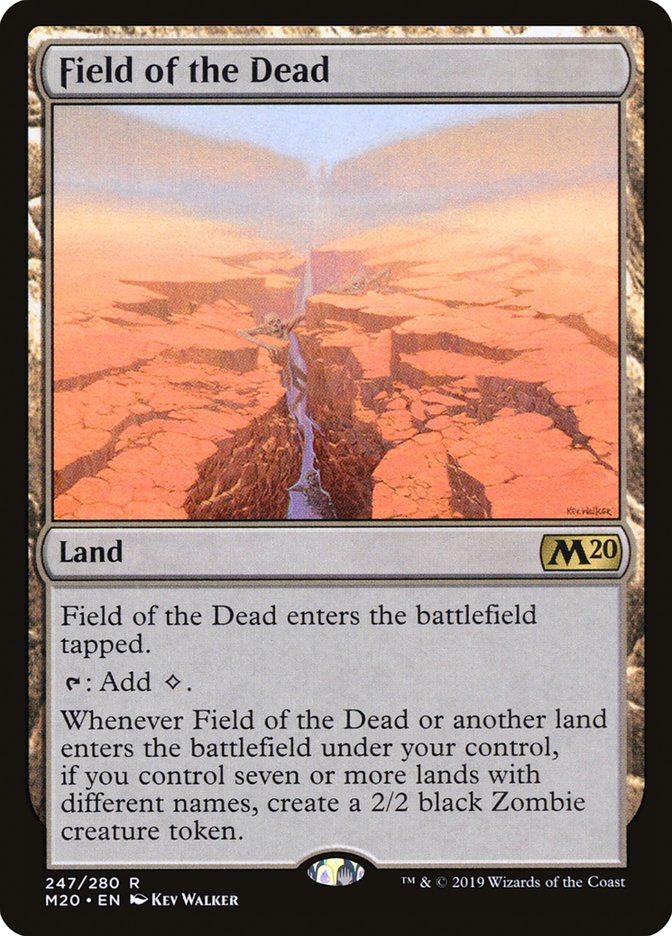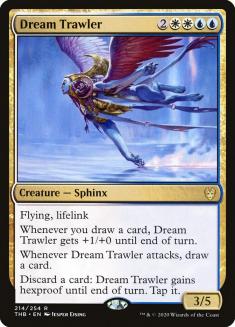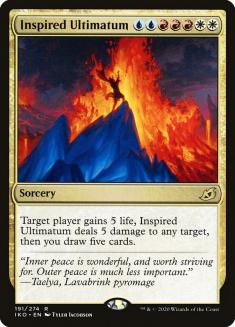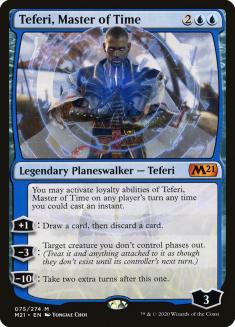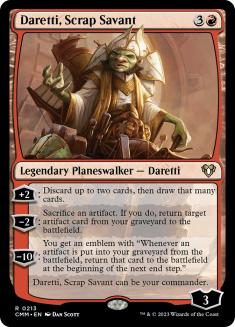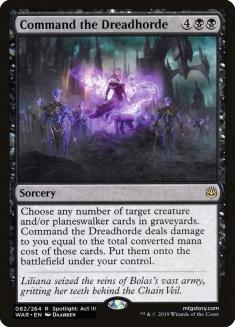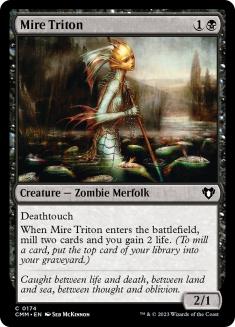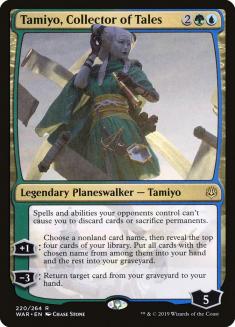Ugin, the Spirit Dragon being revealed for Core Set 2021 was kind of a jaw-dropping moment for me. It felt like the modern-day equivalent of Wildfire just showing up in core sets back in the 2000s. Ugin will be a cornerstone of Standard for the next year and will drastically reshape the format’s rules of engagement from how they have looked like since War of the Spark. A large number of games will end with “and then they resolved Ugin” – not “and I also didn’t draw an answer” – just Ugin resolves and a game you should have won easily is just over.
I brought this up as soon as the card was previewed and got some mixed reactions from people who weren’t playing Standard when Fate Reforged dropped.
It’s easy to have a skewed perception of Ugin these days. In Modern it’s mostly associated with being the Mono-Green Tron planeswalker that isn’t Karn Liberated that spent years facing off against Mox Opal, and Pioneer post-Theros Beyond Death hasn’t really been an Ugin format with the best decks being stack-based combo.
But if your opponents are trying to win by controlling colored permanents and you resolve Ugin, that’s a wrap. They lose everything, Ugin will easily clean up the follow-up, and it also eventually wins the game. Or it will be able to +2 to kill stuff, which makes it nearly unassailable as it rapidly ticks to a game-ending ultimate and punishes any attempts to commit enough cards to kill it with a -X sweep.
While that doesn’t describe every Standard deck, it sure covers most of them. And not just most of them now – most of them from the last decade.
Ugin, the Ramp Payoff
Creatures (12)
Planeswalkers (4)
Lands (28)
Spells (16)

Creatures (9)
Planeswalkers (6)
Lands (19)
Spells (26)

If you weren’t playing Standard five years ago, this is probably where you are most familiar with seeing Ugin. It’s just the simplest execution of what I laid out above: get to eight mana as quickly as possible, cast Ugin, and your opponent is no longer capable of winning with permanents.
Standard right now has some of the most powerful ramp we have seen in ages, to the point that people are sick of seeing it. These cards are especially great in the context of casting an eight-drop spell. While Llanowar Elves is absurdly good, the fact it can die makes it less than ideal for casting giant spells. You’re casting something like Ugin when you have expended all your resources, and if you start losing mana to removal, it often takes you more than a turn of drawing off the top of your deck to replace that. All the Standard ramp focuses on putting lands on the battlefield, and without Agent of Treachery, that can’t be wiped away.
Blowing up your own resources with Ugin’s -X also isn’t optimal. It’s minor relative to them preventing you from casting Ugin by killing mana creatures, but it’s still annoying.
Putting all these ramp spells into the same deck has proven many times to be a winning combination, so there’s no reason to assume an Ugin-slanted version of the same shell wouldn’t also be a successful strategy in the format.
Creatures (15)
Planeswalkers (9)
Lands (29)
Spells (7)
Sideboard

Ugin, the Spirit Dragon as a colorless ramp finisher means something important in a Standard format still saturated with Core Set 2020 color hosers. Aether Gust and Noxious Grasp are stifling to many of the normal green high-end options, where Ugin just slides on in and ignores both of those. Mystical Dispute still hits Ugin, but so would the equivalently costed Neutralize.
There’s a bit of room for your own interactive threats in this deck, and I believe you want to play the first Ugin, the Ineffable over a Voracious Hydra. While Ugin isn’t quite as slottable into a normal curve, the static ability is finally relevant in Standard. War of the Spark‘s Ugin is a mediocre removal spell and mediocre threat engine, but it’s both of those stapled to a card that provides mana for your game-ending eight-drop.
It’s worth noting that Nissa, Who Shakes the World makes Elemental lands that remain colorless. This is important in that your own Ugin doesn’t decimate your manabase if you use Nissa to ramp into it, but it also ends up being the primary way midrange decks can fight against opposing Ugins in the format. Nissa is also a reason to play Triomes in your two-color deck, which naturally bridges you to a third color for a sideboard splash. I chose Flame Sweep, but Zagoth Triome and Noxious Grasp may be a better option.
You can probably support Golos, Tireless Pilgrim’s activated ability off a weird mix of Triomes, especially if you wanted to splash white for Teferi, Time Raveler or wanted to go a step further and beome a Yorion, Sky Nomad deck with Omen of the Hunt. That also gives you a bonus card that survives Ugin’s -X ability, but I think Cavalier of Thorns and Nissa, Who Shakes the World represent more important five-drops in Standard. The Golos toolbox just isn’t that deep in this format, and Cavalier is just better on size and fueling Uro, Titan of Nature’s Wrath.
The ramp shell that might really want Golos is Gates. I’m always skeptical of the “lose the die roll, lose the game” correlation that has always existed with Gates decks, but sometimes things line up to make it not so punishing. If Gates Ablaze or Archway Angel looks like it might be a great card for the format, keep an eye on this deck. Ugin would be a welcome end-game addition to the archetype.
Side note: Golos, Field of the Dead, and Ugin were all supposed to be Standard-legal right now. What the actual heck was going on in Core Set 2020 and Throne of Eldraine design?
Ugin, the Control Finisher
Creatures (4)
Planeswalkers (7)
- 2 Ashiok, Nightmare Weaver
- 2 Kiora, the Crashing Wave
- 1 Garruk, Apex Predator
- 2 Ugin, the Spirit Dragon
Lands (25)
Spells (24)

Creatures (6)
Planeswalkers (1)
Lands (26)
Spells (27)

Probably the most successful Standard application of Ugin the first time around was as a control finisher. Unlike the ramp decks, you didn’t plan on getting to eight mana every game and the cost of a dead card in hand early was much more tangible so you only played one or two copies, but wow were those copies impactful. Some of this deckbuilding in the Fate Reforged era may have been subsidized by Dig Through Time making it easier to see the majority of your deck over a game, but you can always reveal Ugin to Narset, Parter of Veils and build up the same effect in Core Set 2021 Standard.
Standard control does have high-end game-dominating finishers already, but Ugin offers a change of pace. Not only is it a different scale of immediate battlefield impact compared to Dream Trawler or Inspired Ultimatum, it doesn’t have an absurdly specific mana cost. Ugin gets to have a subtitle of Spirit Dragon because the mana cost fits into one symbol, while Dream Trawler probably couldn’t have been a legend with a full name because of the physical constraints of the mana cost keeping the card name short. You can build a Dimir or Izzet deck with Ugin and be just fine; even if you want to play Teferi, keep your Esper manabase just lightly white.
Of course as you should know, if you type the words Esper or Dimir Control into a word processor, Clippy pops up asking if you want a link to the Shaheen Soorani article archive, so here’s a post-Ugin version of a Dimir Control deck he posted back when we had hope Ikoria: Lair of Behomoths had important cards without the companion ability. Add three copies of Eliminate to:
Planeswalkers (8)
Lands (27)
Spells (22)

I’ll let Paulo do most of the talking about Eliminate, but the card is very good even if this deck is built light on counterspells and inherently solid against Teferi. I think playing playing four copies of the card will be metagame-conditional and it’ll be a bit self-selective for making people play four-drop threats, but if you aren’t starting two or three in a black control deck, you are making some massive assumptions about the format.
On the subject of Teferis, I’m not a big fan of Teferi, Master of Time. You never get a piece of cardboard back from it, and you never get your opponent’s mana out of it. The first line of text really grabs your attention, but if you break it down, Teferi has the blue version of Daretti, Scrap Savant’s +2 double rummage; Tamiyo, the Moon Sage’s +1 tap ability as a -3 with a bonus loot; and some arbitrary ultimate. None of that adds up to a good control planeswalker.
Ugin, the Midrange Breaker
Creatures (14)
Planeswalkers (4)
Lands (26)
Spells (16)

The final place I expect to see Ugin is as a midrange mirror breaker. You play a copy, you draw it in a midrange mirror, and you end up easily winning. While the obvious play of going from behind to ahead exists, you aren’t obligated to scale up the -X to clear everything from the battlefield. Having something one cost larger and ending up with Ugin and that thing to nothing comes up a lot in midrange mirrors. The plan of +2 into ultimate also makes Ugin a threat even when not sweeping the battlefield, especially since the +2 does a ton of damage to clean up opposing planeswalkers.
Of course, the difference between a ramp deck and a midrange deck in this format is really blurry. The Simic Ramp deck from earlier is basically the same deck as Sultai or Bant Midrange, just pushing a little harder. You can probably just slide an Ugin into the existing midrange lists and not bat an eye at the cost.
My other immediate thought on seeing Ugin was, “Can we reanimate a planeswalker?” Yes, but the result isn’t great. Command the Dreadhorde isn’t that much cheaper on mana than just casting Ugin, it costs a lot more than just the mana, and its biggest upside is reanimating multiple cards… right into your own Ugin sweep. File that one under “really bad ideas.”
Ugin, the Format Limiter
These decks aren’t complicated ideas. All you need to do with Ugin, the Spirit Dragon is get to eight mana and cast it. You can fiddle with how many you play and the risk of getting one stuck in your hand, think about how the London Mulligan impacts that, and all sorts of other nonsense, but Ugin is going to take over the game if it is cast and resolves.
If your deck expects to play a longer game in the next year of Standard, you need to consider what happens if your opponent just draws and casts Ugin. You can play counterspells, you can play colorless threats, you can be aggressive and have haste threats to close.
Or you can just cast spells, control permanents, and accept that you won’t beat an Ugin. I’m sure that will work out.

